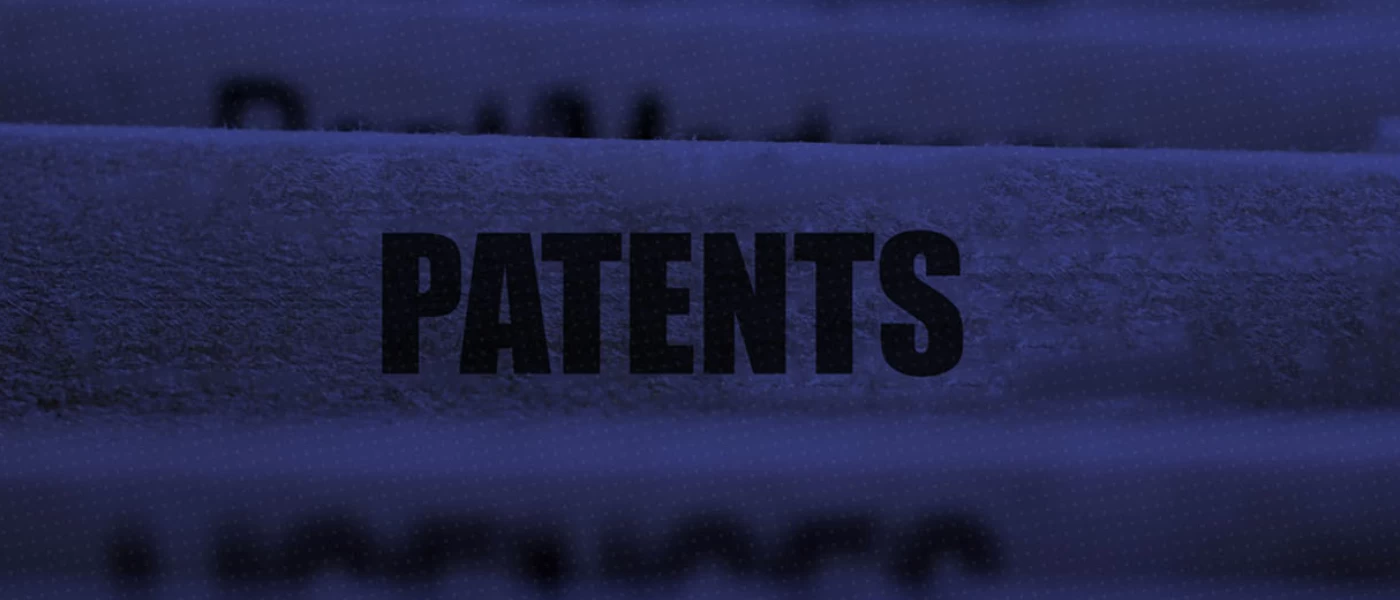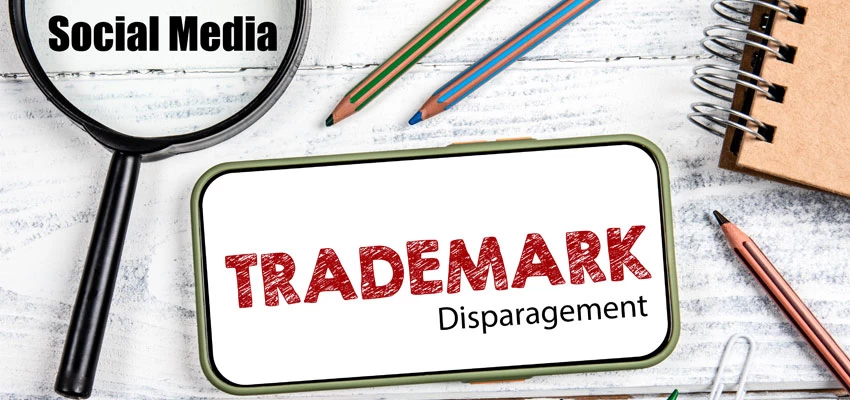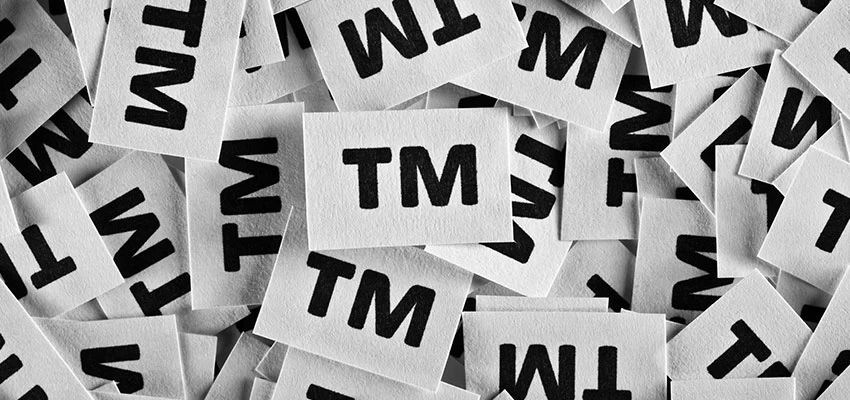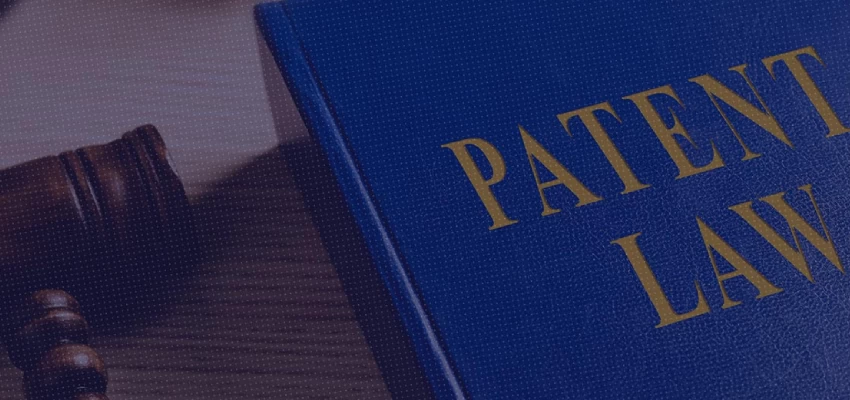The Intellectual Property Appellate Board (‘IPAB’) recently reaffirmed the importance of the principles of natural justice in judicial and/or quasi-judicial decisions, whilst also clarifying aspects of patent law with respect to cited prior art documents and description of the invention. [1]
In the instant case, University of Miami (‘Appellant’) had filed a national phase patent application in India under Rule 20 of the Patent Rules, 2003 (‘Rules‘), vide Patent Application No. 2090/KOLNP/2006 for an invention titled, ‘TOPICAL CO-ENZYME Q10 FORMULATIONS AND METHODS OF USE THEREOF’. The Appellant claimed priority from a U.S. Patent Application No. 60/538,319 dated 22 January 2004, and thereafter filed a PCT application no. PCT/US2005/001581 on 21 January 2005.
Facts and background
Pursuant to the publication of the Appellant’s patent application on 18 May 2007, the Controller of Patents (‘Respondent’) issued the first examination report (‘FER’) on 5 May 2010, the response to which was submitted by the Appellant on 2 May 2011. The objections stated in the hearing notice included that the title of the application was imprecise, the invention was not novel and lacked any inventive step in light of the cited prior art documents, the claims fall under Section 3(d) and 3(e) of the Patents Act, 1970 (‘the Act’), claims 47-79 were not supported by the specification, and that the Appellant had failed to pay certain statutory fees.
Subsequently, the hearing took place on 2 August 2013, the written submissions along with the expert affidavits were filed on 24 and 28 January 2014, and the case was discussed at length with the Respondent on 7 February 2014. On 27 February 2015, the Respondent issued a single-page order, whereby the Respondent rejected the patent application inter alia on the grounds of lack of inventive step and for falling with the scope of Section 3(d) and Section 3(i) of the Act (‘impugned order’). The Appellant thereafter preferred an appeal under Section 117A of the Act before the IPAB.
Invention claimed
The invention claimed by the Appellant was a pharmaceutical composition comprising Coenzyme Q10 (‘Q10‘) and the method of using Q10 for the treatment of cancer, selective reduction of cancer cell growth, the induction of apoptosis in cancer cells, the inhibition of tumour mediated angiogenesis along with a kit for the same.
The composition described in the patent application consisted of Q10 and a pharmaceutically acceptable carrier, preferably a liposome, which could be administered topically or via intravenous injection. In response to the Respondent’s objections, the claims were amended to narrow the scope, and the claims reciting methods of treatment were deleted since they are not permissible in India.
The as filed specification of the Appellant’s patent application included experiments along with analysis of the effects of Q10 on various cell types. It was observed that when Q10 was delivered to normal cells in culture, it did not cause cell death but enhanced their growth, and when Q10 was delivered to cancer cells, it inhibited cell proliferation and caused cell death. Additionally, the specification demonstrated that topical administration of the composition was effective in the treatment of cancer.
In the instant case, crux of the invention was in the effectiveness of Q10 and that of using a lipid along with Q10 in the treatment of cancer, supported by in-vitro studies and animal-based studies. Owing to the promising results, a patent application covering a lipid composition comprising Q10 and methods of treatment using the lipid composition comprising Q10 was filed in India and several other countries. The results were further confirmed, elaborated, and reinforced in various clinical stages which were performed after the filing of the patent application. Expert affidavits from Niven R. Narain and John P. McCook confirmed the safety and efficacy of intravenous, and topical administration, respectively, of the composition claimed to treat cancer.
Impugned order
The Respondent rejected the Appellant’s patent application on the following grounds –
- The use of liposome as a carrier of active drug molecules was already known in the cited prior art, and the proposed amendment of the claim by combining Q10 with a liposome along with the evidence for enhancement of activity was beyond the scope of the invention as described in the specification;
- Further, the technical results or post-filing data could not be included in the specification description as it was not permissible as per Section 59 of the Act;
- The Appellant failed to incorporate the further experimental results in the specification by way of amendments within the stipulated time period; the merit of the invention would thus have to be decided based on the disclosure on record;
- The specification lacked technical data to prove enhancement of efficacy, and thus the invention did not involve any inventive step as per Section 2(1)(j) of the Act and was not patentable under Section 3(d) of the Act; and
- The revised claim fell under Section 3(i) of the Act i.e., method of treatment, and thus could not be allowed.
The Appellant had during the prosecution of the instant patent application before the Respondent, filed Form-3 on several occasions[2] to comply with Section 8 of the Act, and filed details regarding the prosecution of its corresponding EP application no. 5711599 along with its response to the FER. Further, the Appellant advanced detailed arguments on each of the above-mentioned grounds of refusal before the IPAB.
Violations of principles of natural justice and Section 3(i) objection
The Appellant submitted that the claims in the patent application were regarding a pharmaceutical composition and not a method of treatment, and therefore could not fall within the purview of Section 3(i) of the Act. It was also submitted that the Respondent had incorrectly rejected its patent application under Section 3(i) of the Act as the said ground of objection was not raised in the hearing notice and failed to communicate the objection to the Appellant as required under Section 14 of the Act, and hence acted against the principles of natural justice. The IPAB concurred with these submissions and held that the same was an error committed by the Respondent and against the principles of natural justice.
The IPAB held that the claims of the present application are directed to a pharmaceutical composition which has been clearly defined with its components in the claim and that the claims are not directed to a method of treatment and therefore cannot fall under Section 3(i) of the Act. The IPAB noted that the expression ‘composition for the treatment’ has been used in the preamble of many claims which have been granted by the office of Respondent and is only a way of defining the composition and in no way the claimed composition can be a method performed by a physician for treatment of disease. The IPAB held that there are plenty of compositions claimed wherein the composition is defined in the preamble with the disease/condition that is being treated with the composition. It was thus held that the objection of Section 3(i) of the Act on composition claims shows non-application of mind by the Respondent and is a clear error apparent on face.
Additionally, the Appellant stated that the Respondent’s failure to provide a reasoned order violated the principles of natural justice. The IPAB relied upon its earlier decision in Order No. 8/2014, wherein the IPAB held that it was an established legal principle that a refusal decision in which the Appellant’s rights were refused had to be a speaking order. The IPAB emphasized that the details regarding the grounds for refusal, and how those grounds are established have to be elaborated in the order and that in the absence of such a speaking order, there is a flagrant violation of the principles of the natural justice and also the principles of law established in the country.
Prior art documents vis-à-vis Section 2(1)(j)
The IPAB observed that the Respondent in the impugned order did not indicate as to which cited prior art documents was considered for refusing the instant patent application for lack of inventive step and as to how the said application lacks inventive step. The IPAB pertinently observed that the hearing notice did not point out the claims that have been identified as lacking inventive step or novelty in view of the cited documents and, therefore, in the absence of a clear indication, the cited references were argued by the Appellant in reference to all the claims.
The Appellant argued that D1 US2002/0156302 (‘D1’) failed to teach or suggest any element of the claimed invention, and it would not have been possible for a person skilled in the art to have formulated the topical or intravenous administration of the claimed composition. D1 disclosed Q10 to be associated with the treatment of cardiovascular diseases but not for the treatment of cancer. Further, D1 taught that the composition comprising Q10 is to be prepared in vegetable oils. In contrast, the claimed invention is directed to a liposomal composition comprising Q10. Since the liposomes are formed in aqueous solutions and not in oils, therefore, the Appellant emphasized that D1 neither teaches nor suggests the claimed composition.
It was submitted that Document D1 in general discloses that Q10 is associated with the treatment of several diseases, particularly cardiovascular diseases. D1 further discloses that amongst the number of pharmacological uses ascribed to Q10, one such use is for “anticancer” activity and that such activity is related to Q10 being an antioxidant. A skilled person referring to D1 in relation to cancer would not be led to believe that Q10 had a potential therapeutic activity to treat cancer, but rather would be led to believe that the anticancer activity ascribed to Q10 is a preventive activity. At the time of the invention, a skilled person would neither have had the motivation nor a reasonable expectation to have successfully modified D1 to arrive at the claimed invention. The Appellant accordingly submitted that D1 failed to teach the claimed invention and therefore could not render the claimed invention to be lacking in novelty or inventive step.
The Appellant submitted that D2 US2002/0039595 (‘D2’) was directed to a liposomal composition in a gelatine capsule for oral delivery, and not a topical or intravenous delivery. There was no suggestion that the D2 composition comprising Q10 would be useful to treat any disease or condition. The Appellant argued that D2 thus failed to destroy the inventiveness of the claimed invention.
With respect to Kokawa et al., (‘D3’), the Appellant submitted that it provided no teaching with respect to either Q10 compositions or composition comprising Q10 and liposome. The Document D3 discloses that Q10 being a physiological activator of the electron transport system in mitochondria may promote the metabolism of a chemotherapeutic agent, however, a skilled person on reading D3 would not expect Q10 per se to contain any utility in the treatment of cancer.
With respect to D4 US6582723 (‘D4’), the Appellant submitted that it was directed to a composition comprising a combination of specific nutrients that would help prevent, protect, and neutralise cancer cells by boosting the body’s immune system. D4 was directed solely to nutrients and for oral administration only. A skilled person who reads D4 would not expect the individual components of a composition to individually produce the effect of the combination i.e., even if D4 taught that Q10 could treat cancer (which it did not), it did not demonstrate that Q10 alone, without the other components, could treat cancer.
On considering the above submissions, the IPAB held that none of the cited references, either singly or collectively taught or suggested a composition comprising Q10 and a liposome for a topical or intravenous administration as claimed. The IPAB acknowledged that the results provided in the specification and the declarations provided clearly demonstrate the surprising advantages of the claimed compositions comprising Coenzyme Q10 and a lipid in both the delivery of Coenzyme Q10 to a cell and in the treatment of cancer. The IPAB held that these results could not have been expected from the teachings of the cited prior art documents. The IPAB pointed out that the results, particularly on page 2 point no. 5 of the expert affidavit of Mr. Niven R. Narain showed that the formulation of Coenzyme Q10 with a lipid increases cellular uptake of Coenzyme Q10 as compared to formulation of Coenzyme Q10 in a composition not containing a lipid. The IPAB thus reasoned that these observations provide a possible mechanism contributing to the demonstrated efficacy of the topically administered, lipid containing Coenzyme Q10 formulation in the treatment of cancer in a xenogeneic mouse model as provided in the specification.
Thus, it was held that none of the cited prior art references destroyed the novelty or inventiveness of the claimed invention, and that the Respondent erred in holding that the claimed invention lacked inventive step. The IPAB also held that the Respondent erred further in not elaborating on how the invention lacks inventive step, i.e., in view of which documents it lacks inventive step.
The IPAB also held that the instant patent application specifically provided data which elaborated the efficacy of the claimed composition and on how the ingredients acted synergistically to produce the results, whilst the expert affidavits further explained the non-obviousness of the patent application. The IPAB noted that similar affidavits have been filed by the Appellant in other jurisdiction and have been considered by the respective patent offices. However, the IPAB observed that there is not even a whisper of such affidavits and the data, or the details provided therein in the impugned order by the Respondent. The IPAB thus held that the Respondent had rejected the present application in complete disregard of the evidence on record filed by the Appellant and thus there was a violation of the principles of natural justice.
Violation of legal principle laid down by IPAB in terms of Section 3(d)
The IPAB held that the Respondent erred in holding that the claims in the patent application fell under Section 3(d) of the Act without providing reasons for the same. The IPAB relied on its previous decision in Order No. 173/2013, wherein the applicability of Section 3(d) of the Act in the context of combinations was discussed. The IPAB noted that neither the hearing notice nor the impugned order explained precisely what is the ‘known’ substance vis-à-vis which enhanced efficacy had to be shown. The IPAB observed that the hearing notice also failed to explain how section 3(d) would apply to the present case. The IPAB emphasized that there are various case laws by which it had made clear that the Controller is duty bound to give reasons in any order being passed and in case no reasoning is found in the order and it is very vague, it deserves to be set aside. The IPAB thus held that the Respondent was not correct in holding that the composition claims fall under Section 3(d) of the Act and further erred in not giving reasons for the same.
Filing of additional data
The IPAB observed that the Appellant filed extensive data and also clinical trial results to support the patentability of the present invention in the form of affidavits and also elaborated on the data in the patent specification which, in itself, contains extensive experimental details clearly establishing that the composition comprising Coenzyme Q10 and lipid has improved efficacy and surprising advantages in the treatment of cancer. The IPAB thus held that the Respondent was not correct in disallowing said additional data as the filing of said additional data is permissible. The IPAB held that filing of additional documents, data and evidence in support of the invention, to overcome the objection raised and to attack a specific objection is something which is allowed under the Patent Law of not only India but also other foreign jurisdictions.
Support of claims in the specification
The IPAB held that the Appellant’s claims were supported by the as filed specification and were not beyond the scope of the subject matter as originally disclosed. The IPAB held that the composition comprising lipids and Q10 had been clearly defined, the efficacy of the composition had also been studied and demonstrated, and data supporting the invention obtained by further research had been provided as supporting evidence. The IPAB held that the Respondent was incorrect to have stated that the composition as claimed was beyond the scope of what had been originally disclosed as the claims have only been limited to a particular embodiment. The IPAB noted that data obtained by further research and clinical data has been provided as supporting evidence. The IPAB held that a claim which is limited to an embodiment of the initial claims, an embodiment which has been exemplified in the specification, cannot be held to be beyond the scope of what was originally filed.
Conclusion
The IPAB considered the facts and legal issues and concluded that the impugned order had been passed without appropriate application of the law to the facts in the case. The IPAB held that the Respondent had failed to consider the facts and evidence produced by the Appellant and passed a vague order.
The IPAB upheld the claims of the instant application to be novel and inventive in view of the cited prior art documents, which were supported by the specification as originally filed. The IPAB criticised the Respondent for having taken a contrary view as to the patentability of the instant application when it had been recognised in other countries. The IPAB emphasized that the Respondent was duty bound to provide reasoning when taking a contrary view, which was lacking in the impugned order. Thus, the impugned order was found to be contrary to law and was set aside. The Respondent was directed to grant the patent.
[The author is an Associate in Intellectual Property Rights team in Lakshmikumaran & Sridharan Attorneys, New Delhi]
- [1] University of Miami v. The Controller of Patents - OA/33/2015/PT/KOL, decided on 25 August 2020.
- [2] 25 July 2006, 20 October 2006, 25 December 2011, 2 September 2013, and 22 July 2013.











